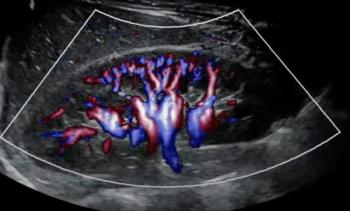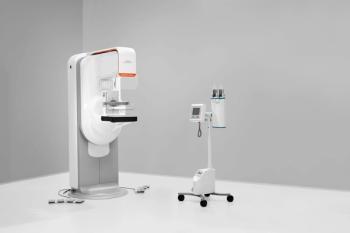
MRI for Better Fetal Abnormality Detection
Scans can more precisely define malformations that can be challenging for ultrasound.
Using fetal MRI imaging can more precisely reveal any head, neck, thoracic, abdominal, and spinal malformations in unborn babies, helping clinicians provide better care for children both before and after birth.
In a study published recently in
In the wake of research focused on correcting for fetal movement in fetal brain MRI, as well as fetal heart imaging, there has been a call for MRI imaging of the entire fetus. Investigators from King’s College London School of Biomedical Engineering & Imaging Sciences at Evelina London Children’s Hospital have risen to the challenge, developing a post-acquisition pipeline that can motion correct and volume reconstruct whole fetal body images.
Ultrasound is still considered the gold standard for fetal imaging, but sometimes—and for some needs – it falls short. Fortunately, the team led by Mary Rutherford, professor in the School of Biomedical Engineering & Imaging Sciences said, MRI is also safe for both pregnant women and their unborn children.
“Until now, ultrasound has been the modality of choice to diagnose those anomalies,” she said. “However, sometimes the ability of ultrasound to define the most detailed anatomy is limited. MRI scanning offers the potential to more precisely define malformations that could help support clinicians in their planning of care and counseling of parents.”
Great Ormond Street Hospital and University College London also participated in this research.
Recently, the team noted, advances with MRI have strengthened its abilities to investigate several conditions, including fetuses with spina bifida to determine if patients might benefit from fetal surgery. Other recent advancements have also opened the door for MRI to provide motion correction of the fetal images, as well as volume reconstructions of body organs and defects, improving visualization, detection and characterization of abnormalities.
In some instances, the team explained, MRI clearly outpaces ultrasound. For example, it can clearly assess tumor extension and provide 3D visualization for fetal neck masses as they relate to the airway, and it can also offer better differentiation between normal and abnormal lung tissue. In addition, it can provide better details that ultrasound for diaphragmatic hernia, particularly late in gestation.
But, there is more work yet to be done, they said. Additional research is underway, concentrating on a fully automated process appropriate for clinical translation and dissemination into clinical practice.
For more coverage based on industry expert insights and research, subscribe to the Diagnostic Imaging e-Newsletter
Newsletter
Stay at the forefront of radiology with the Diagnostic Imaging newsletter, delivering the latest news, clinical insights, and imaging advancements for today’s radiologists.




























